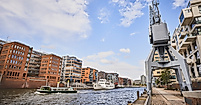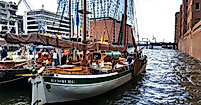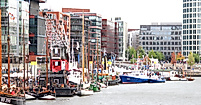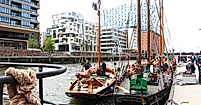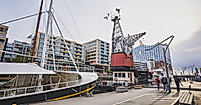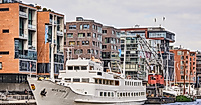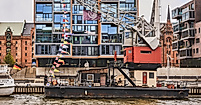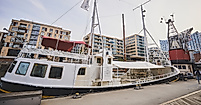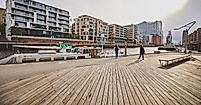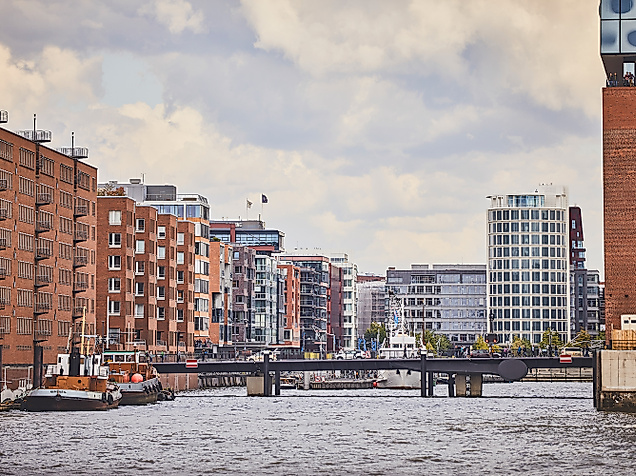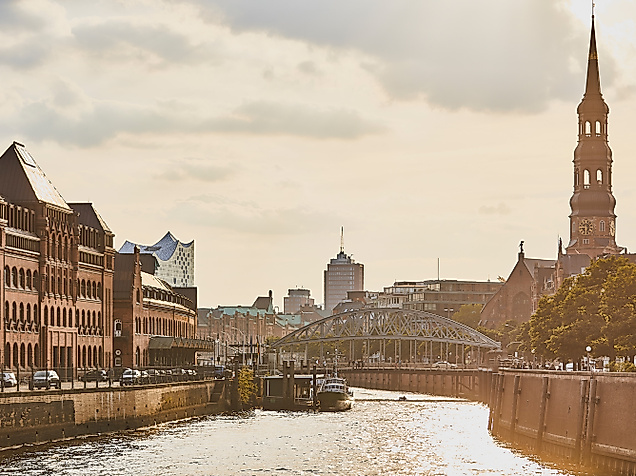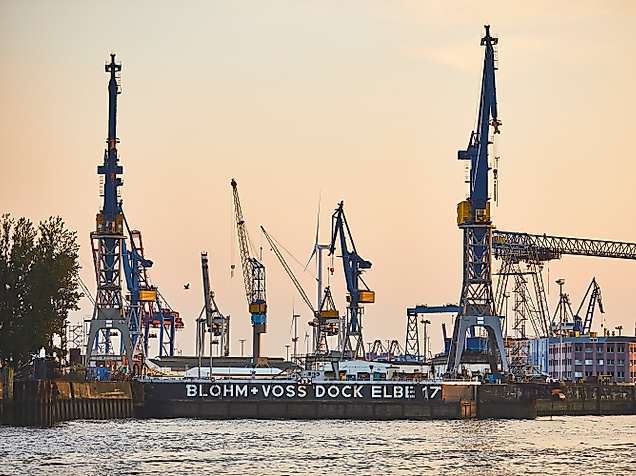
At its opening in 1866, the Sandtorhafen harbour was the first artificially created harbour basin in Hamburg in which seagoing ships could be loaded and unloaded lying alongside the docks..
The Sandtorhafen is the traditional Ship Harbour of the Hamburg Maritime foundation and is the link between tradition and modernism in the heart of Hamburg. The curved pontoon of 5.600 square metres and a length of 380 m provides 20-25 berths for historic ship.
In 1866 the Sandtorhafen was the first artificial harbour basin creation in Hamburg. Over the years they developed and applied a new and revolutionised transhipment concept. By using steam-powered cranes, this lifted the goods from the holds of the ships and placed them into the quay sheds, onto railway wagons or horse-drawn vehicles. Since then the Sandtorhafen has become the foundation for the modern harbour of Hamburg.
Over the years the harbour became too small for the increasingly large ships, therefore it turned into a terminal for smaller ships from the North and Baltic sea. In 1980s, the small harbour became more irrelevant, due to the container transport, until it was shut down. In September 2008 it was reintroduced as the traditional Ship Harbour, which has become a fundamental part of the maritime HafenCity. Furthermore, the pontoon provides berths for historic ships to uphold the history of the place.
However, the foundation Hamburg Maritime does not only operate the traditional Ship Harbour and numerous historic ships, but were the ones to bring old sailing ships, steamships, freighters and tugboats to the location. For example the working steamship ‘Schaarhörn’, the tugboat of a schooner known as ‘No. 5 Elbe’, the sailing ship ‘Catarina’ and the tourist steamer ‘Seute Deern’. However, there are more historic vessels, which can be found in the harbour during big event, such as the gaff-topsail schooner ‘J.R. Tolkien’, the ‘Loth Loriën’ or the former warship ‘Freddy’.
